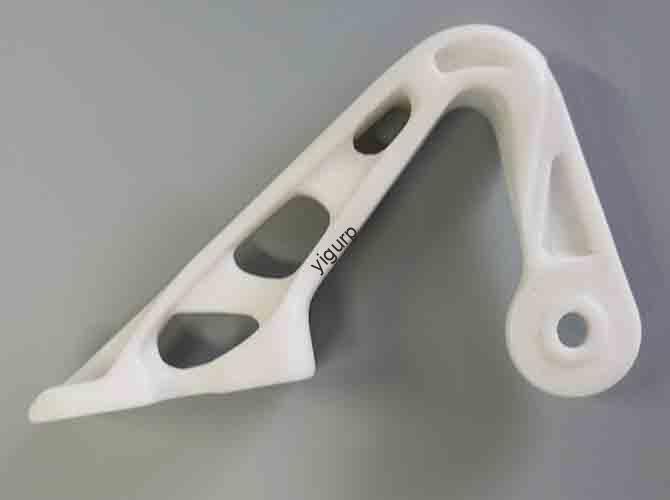In the era of smart manufacturing, 3D high-precision printing has redefined how industries create complex, high-quality components. Unlike traditional subtractive methods that carve away material, this technology builds objects layer by layer—unlocking possibilities for intricate designs, faster production, and tailored solutions. This guide dives into its core principles, key advantages, real-world applications, and why it’s a critical tool for forward-thinking businesses.
1. Core Principles of 3D High-Precision Printing
At its heart, 3D high-precision printing relies on a “layer-by-layer deposition” process, driven by digital models (e.g., CAD files). This approach eliminates the limitations of traditional manufacturing, where complex shapes often require expensive molds or multiple machining steps. Below is a breakdown of how it works, plus a comparison to subtractive methods.
1.1 Step-by-Step Workflow
- Digital Modeling: Create a detailed 3D model using software (e.g., SolidWorks, Fusion 360). The model is sliced into thousands of thin 2D layers (typically 10–100 microns thick).
- Material Preparation: Load specialized materials (plastics, metals, ceramics) into the 3D printer. Each material is optimized for precision—e.g., metal powders for aerospace parts, biocompatible resins for medical devices.
- Layer-by-Layer Printing: The printer deposits or cures one layer at a time. For example:
- Powder-based systems (e.g., SLM) use lasers to fuse metal powder.
- Resin-based systems (e.g., DLP) use light to harden photosensitive resin.
- Post-Processing: Remove the part, clean excess material, and apply finishing steps (e.g., heat treatment for metals, polishing for plastics) to enhance strength and precision.
1.2 3D High-Precision Printing vs. Traditional Subtractive Manufacturing
| Feature | 3D High-Precision Printing | Traditional Subtractive Manufacturing (e.g., CNC Machining) |
| Material Usage | Minimal waste (only uses needed material) | High waste (carves away up to 70% of raw material) |
| Complexity Support | Handles intricate geometries (e.g., internal channels) | Struggles with complex shapes (requires multiple setups) |
| Lead Time | Fast (prototypes in hours/days) | Slow (molds/tooling take weeks/months) |
| Customization | Easy (adjust digital model only) | Difficult (requires new tooling for each design) |
2. Key Advantages of 3D High-Precision Printing
What makes this technology a game-changer? Its four core strengths address critical pain points for industries like aerospace, healthcare, and automotive—from reducing costs to enabling innovation.
2.1 Advantage Breakdown (with Data)
| Advantage | Details & Real-World Impact |
| Micron-Level Accuracy | Achieves precision as low as 5–10 microns (0.005–0.01 mm)—critical for medical implants and aerospace components. For example, dental crowns printed with this precision fit patients’ teeth perfectly. |
| Unmatched Design Freedom | No shape restrictions: Print parts with internal lattices, hollow structures, or organic curves. This has enabled lighter aerospace parts (reducing fuel costs by 15–20%) and personalized medical devices. |
| Diverse Material Support | Works with over 100+ materials, including: – Metals: Titanium (for implants), aluminum (for aerospace). – Plastics: ABS (for automotive parts), biocompatible resins (for surgical tools). – Ceramics: Zirconia (for dental crowns), alumina (for industrial sensors). |
| Shortened Production Cycles | Cuts lead times by 50–80% compared to traditional methods. For example, automotive prototypes that once took 6 weeks to make can now be printed in 2–3 days—accelerating R&D. |
3. Real-World Applications of 3D High-Precision Printing
This technology isn’t just innovative—it’s practical. Below are its most impactful use cases, with industry-specific examples.
3.1 Aerospace Industry
- Lightweight Components: Prints titanium or aluminum parts (e.g., engine brackets, fuel nozzles) that are 30–50% lighter than traditional parts. This reduces aircraft weight, lowering fuel consumption by 10–15%.
- Complex Engine Parts: Creates turbine blades with internal cooling channels—impossible with CNC machining. These blades improve engine efficiency by 20%.
3.2 Healthcare Industry
- Custom Medical Devices: Produces personalized prostheses (e.g., artificial hips) and orthopedic stents. Using patient scans, parts fit perfectly—reducing post-surgery complications by 40%.
- Surgical Tools: Prints high-precision tools (e.g., biopsy forceps) with 10-micron accuracy. These tools are more durable than plastic alternatives and cost 30% less to produce.
3.3 Automotive Industry
- Rapid Prototyping: Tests new designs (e.g., dashboard components, door handles) in days instead of weeks. This speeds up new car launches by 3–6 months.
- Customized Parts: Makes limited-edition parts (e.g., racing spoilers) for high-end vehicles. No tooling is needed—saving manufacturers $50,000+ per design.
Yigu Technology’s Perspective on 3D High-Precision Printing
At Yigu Technology, we view 3D high-precision printing as a catalyst for industrial transformation. Its ability to balance accuracy, speed, and material diversity helps our clients solve unique challenges—from creating lightweight aerospace parts to personalized medical devices. We’ve integrated this technology into our solutions to cut client lead times by 60% and reduce material waste by 50%. As materials and printers advance, we expect it to become the standard for high-value manufacturing—especially in sectors where precision and customization are non-negotiable.
FAQ: Common Questions About 3D High-Precision Printing
- Q: Is 3D high-precision printing only for small parts?
A: No. While it excels at small, detailed parts, industrial printers can produce large components (e.g., 1m x 1m aerospace panels) with the same precision. The key is choosing the right printer and material.
- Q: Are 3D-printed high-precision parts as strong as traditionally made parts?
A: Yes—often stronger. For example, metal parts printed via SLM have a 99.9% density (same as forged metal) and can withstand high temperatures. Post-processing (e.g., heat treatment) further boosts strength.
- Q: How much does a 3D high-precision printer cost?
A: Prices vary by size and capability: – Desktop models (for small plastics): \(5,000–\)50,000. – Industrial metal printers (for aerospace/medical): \(200,000–\)2 million. The cost is offset by lower material waste and faster lead times.
